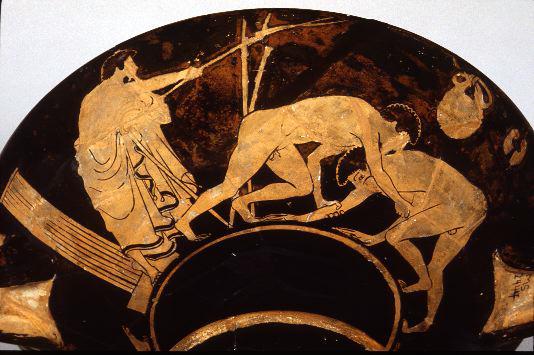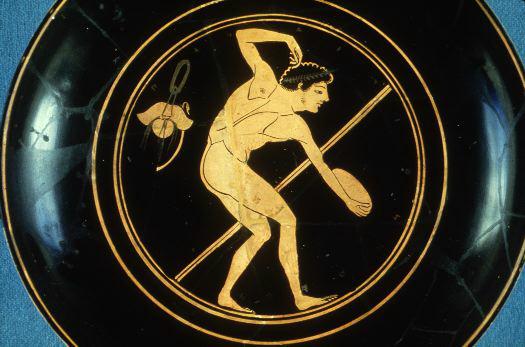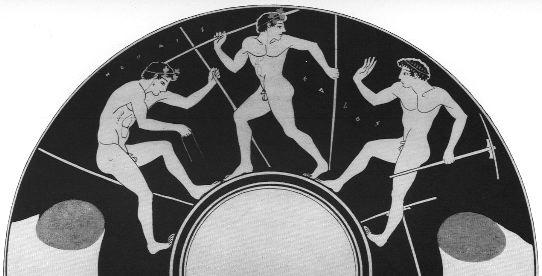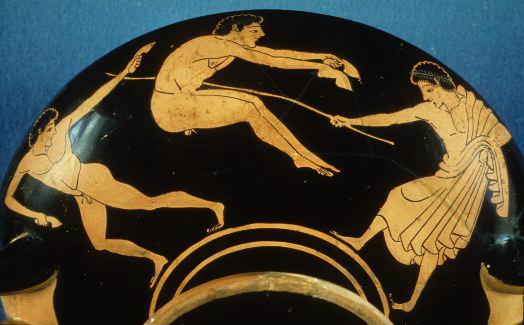





Ancient Olympic Events
- Boxing
- Equestrian events
- Pankration
- Pentathlon
- Running
- Wrestling
Pentathlon

Side A: trainer watching wrestlers
Photograph by Maria Daniels, courtesy of The University of Pennsylvania Museum of Archaeology and Anthropology
This was a 5-event combination of discus, javelin, jumping, running and wrestling.
| Aristotle describes a young man's ultimate physical beauty: "a body capable of enduring all efforts, either of the racecourse or of bodily strength...This is why the athletes in the pentathlon are most beautiful." (Aristotle, Rhetoric 1361b) |

Tondo: discus thrower
Photograph courtesy of the Museum of Fine Arts, Boston
The ancient Greeks considered the rhythm and precision of an athlete throwing the discus as important as his strength.
The discus was made of stone, iron, bronze, or lead, and was shaped like a flying saucer. Sizes varied, since the boys' division was not expected to throw the same weight as the mens'.

Side A: athletes
From Caskey & Beazley, plate XXXVII. With permission of the Museum of Fine Arts, Boston.
The javelin was a man-high length of wood, with either a sharpened end or an attached metal point. It had a thong for a hurler's fingers attached to its center of gravity, which increased the precision and distance of a javelin's flight.

Side B: youth with javelin, from the waist up
Photograph by Maria Daniels, courtesy of Harvard University Art Museums

Side A: jumper
Photograph courtesy of the Museum of Fine Arts, Boston
Athletes used lead or stone jump weights (halteres) shaped like telephone receivers to increase the length of their jump. The halteres were held in front of the athlete during his ascent, and forcibly thrust behind his back and dropped during his descent to help propel his body further.

Side A: diskos bag and halteres above wrestlers
Photograph by Maria Daniels, courtesy of The University of Pennsylvania Museum of Archaeology and Anthropology
Jump weights also doubled as weight lifting equipment during training.
Running
See the section on running.
Wrestling
See the section on wrestling .
To read more about these topics, see Further Resources.
This exhibit is a subset of materials from the Perseus Project database and is copyrighted. Please send us your comments.